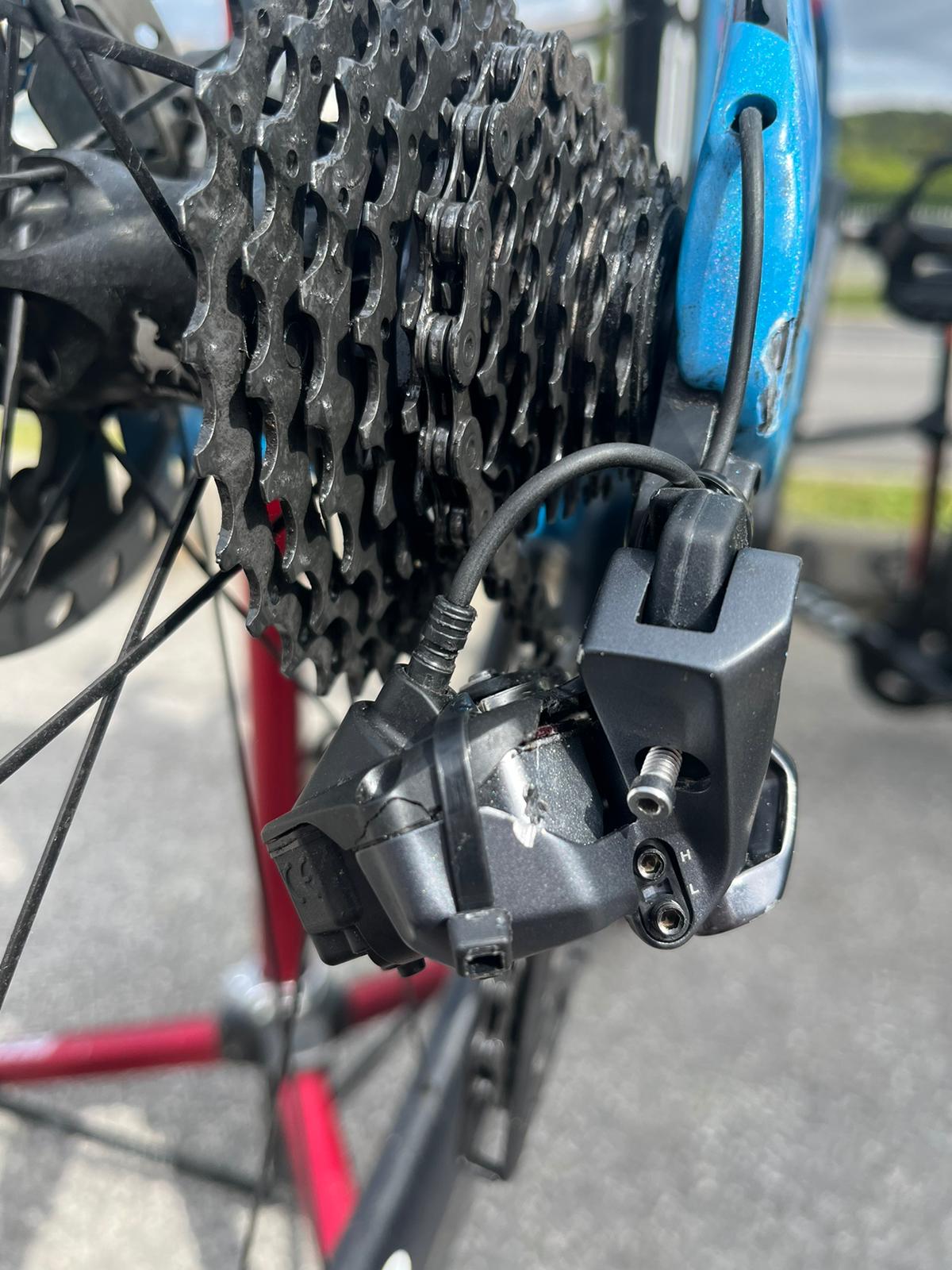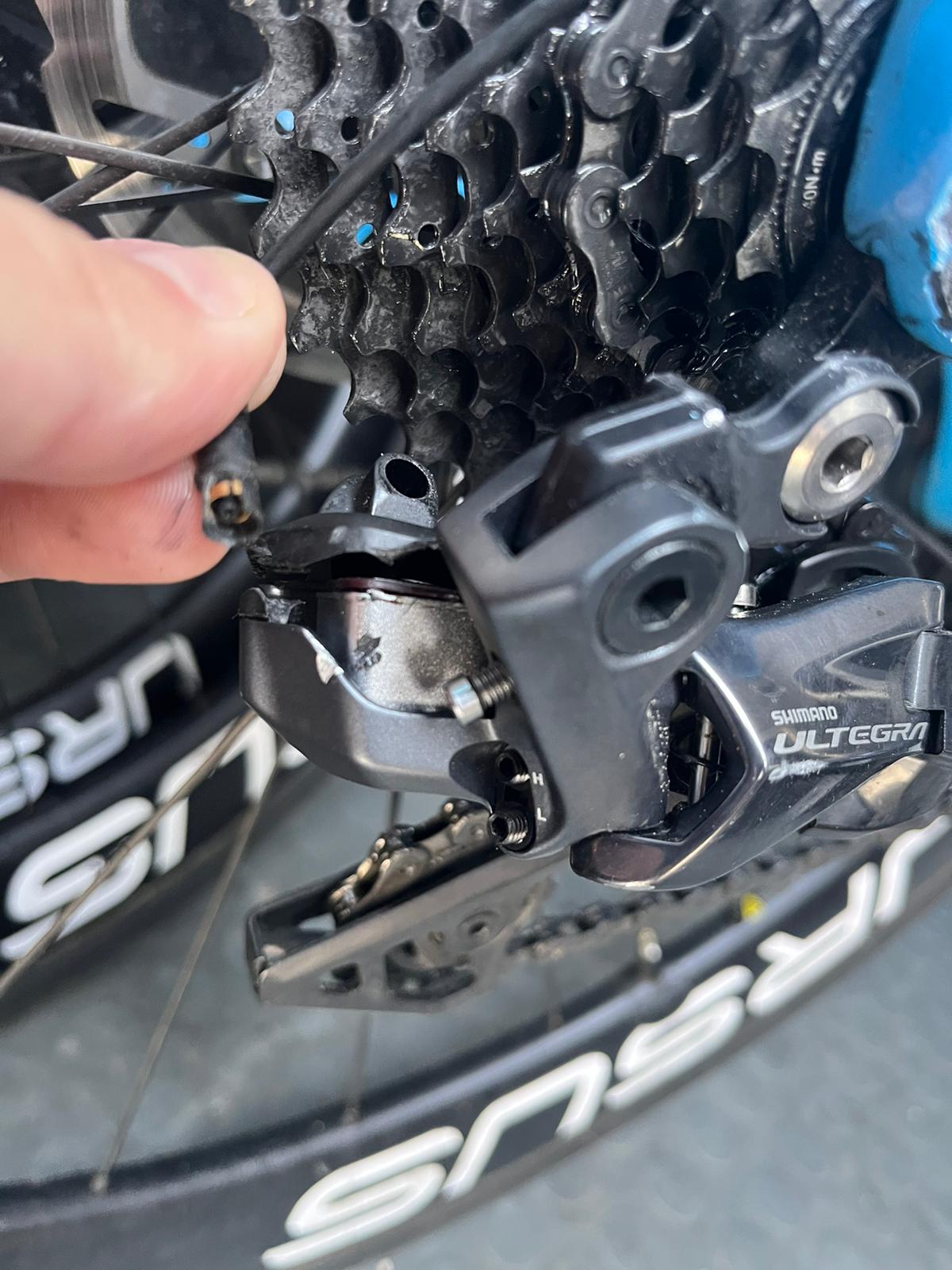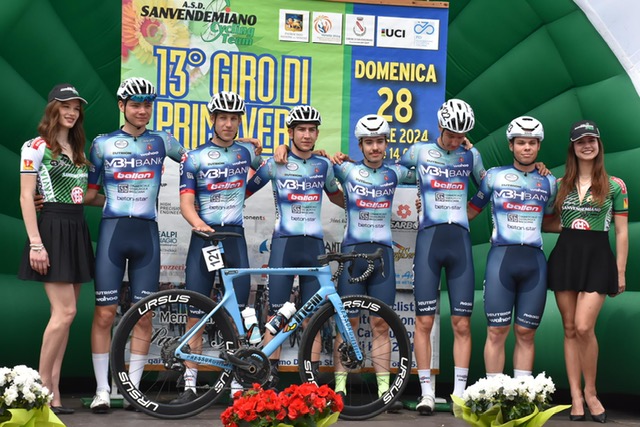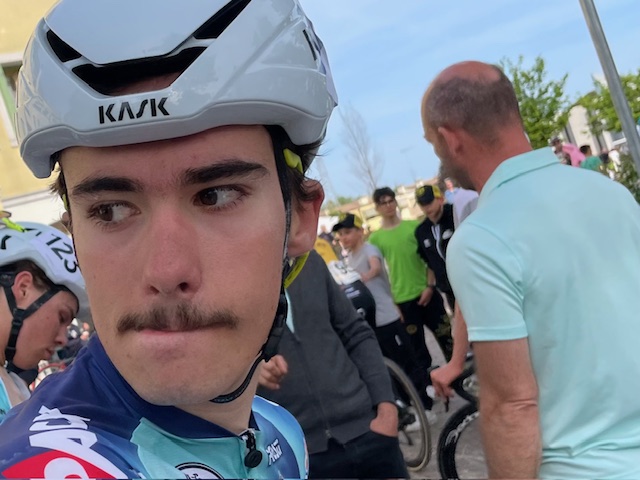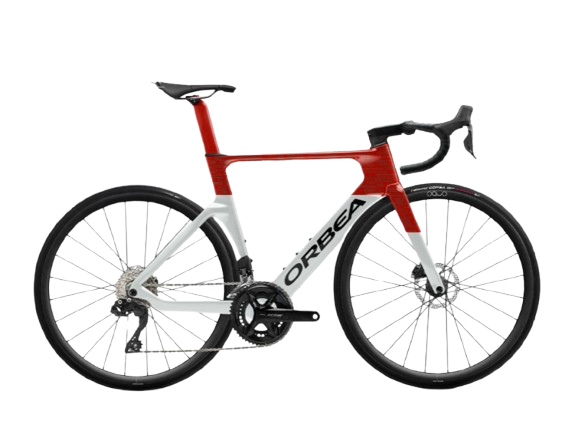Three days after the disappointing Coppa Montes, it was time for the Giro di Primavera. A road race covering 129 km with 1,608 meters of elevation.
My derailleur was practically in shambles. The issue was that finding this specific version of the Shimano Ultegra DI2 11-speed was nearly impossible. New ones were hard—nearly impossible—to get, and second-hand options were scarce—not to mention the uncertainty of what you might end up with if you managed to track one down.
When I was hit during the race on the 25th, and the mechanic checked what was left of the derailleur, we started looking for a solution. The team didn’t have a spare. My dad tried to organize something from back home, but it seemed hopeless at first. Then Bálint’s dad called to say they had a broken derailleur at home, but the main structure was intact, so maybe we could piece something together. This was helpful because my parents were coming to join me, and they could’ve brought it along.
However, we found an even better solution. My U17 teammate Ábris’s dad, who was coming after us to bring our two U17 teammates, had an identical spare derailleur at home and brought it to leave with the team.
Great, I thought—I’m saved! But in the end, despite Ábris’s dad bringing it, it never made it onto my bike. Instead, this is the solution we came up with:
The cable connector was also broken and had been forced into the derailleur housing out of sheer desperation. Zip ties were holding the shattered casing together. So, that’s where we started from:
It definitely looked better, but unfortunately, it was still far from a permanent and reliable fix. The derailleur hanger was bent, and it turned out at the service back home that it was misaligned by 15 millimeters (measured around the wheel’s circumference). That’s dramatic. You can even see in the picture how far out of place it is. The derailleur shifted unpredictably, and I had about two usable gears where the chain and cassette didn’t grind against each other—5th and 6th gear worked tolerably, but the rest were unmanageable.
At least I could ride the bike. I was hoping it would hold up reasonably well during the race.
The organizers put in maximum effort to craft a vibrant and energetic atmosphere for the race. Back home, maybe only Formula 1 gets this kind of festive vibe, but they really pulled out all the stops for us here—there was even confetti! We had an amazing time. The legendary Italian hospitality certainly lived up to its reputation. It felt great being on the start line; the atmosphere was electric. I could focus entirely on the race, and that felt good.
There were 200 of us at the start line. In Italy, a race is basically full throttle from the moment the pedal is clipped in, and they push at a brutal pace all the way to the finish—or until they drop. Or until the broom wagon pulls them out. And that’s exactly how it went this time too.
The reason behind this is that in the second year of U19, it’s make-or-break time. This is when it’s decided who will get into a team where they can actually build a career, and who will remain an amateur because they didn’t make it to that level. So, everyone is literally racing for their life out here. And, in a way, so were we.
The Hungarian national team was also here, along with us, the MBH Bank Cycling Team from Hungary.
Out of the 200 riders, only 47 made it to the finish. The rest were pulled out by the broom wagon or dropped out due to crashes or mechanical issues. In an Italian race, this is completely normal. The broom wagon is ruthless. If you have a mechanical problem, wait for your team car, and can’t get back in time after the repair, then that’s it, race over.
From the national team, only Szabi Csáki finished. The others were also taken out by the broom wagon. From our team, Bálint Makrai and Zsombor Takács made it through, with Zsombi finishing 4th after a massive sprint, just missing the podium by a hair. I was really happy for him—he rode incredibly well. And since the broom wagon had already taken us out, at least we got to see the sprint finish and cheer him on.
Looking back, I probably would have been out even if my derailleur hadn’t been so messed up, but at least I had that extra fight on my hands.
We still had the May 1st and May 4th races ahead of us. Both were entry-limited: only five riders could start from each foreign team, and we were six.
I figured that due to the derailleur issue, I’d be the one sitting out one of the races and that we’d find a solution so I could ride the other. The day before the May 1st race, I was told I wouldn’t be starting. Then, just a two days before the race on the 4th, I was informed I wouldn’t be riding in that one either.
In any case, I stuck to my training plan, and then my dad and I took the bike to a mechanic, who straightened out the derailleur hanger and managed to work some magic with the broken derailleur, making it functional. He warned me it wouldn’t look pretty, but it would work for a while—hopefully until the team could find a replacement. He also made it clear it wasn’t going to last long.
In the end, the team didn’t field me for the next three races. I didn’t race again between April 28th and May 31st. I wasn’t expecting that, but as I always tell myself, this is part of top-level sport, and learning to deal with these moments is also a skill. But if you want to know how it feels—well, it sucks.
